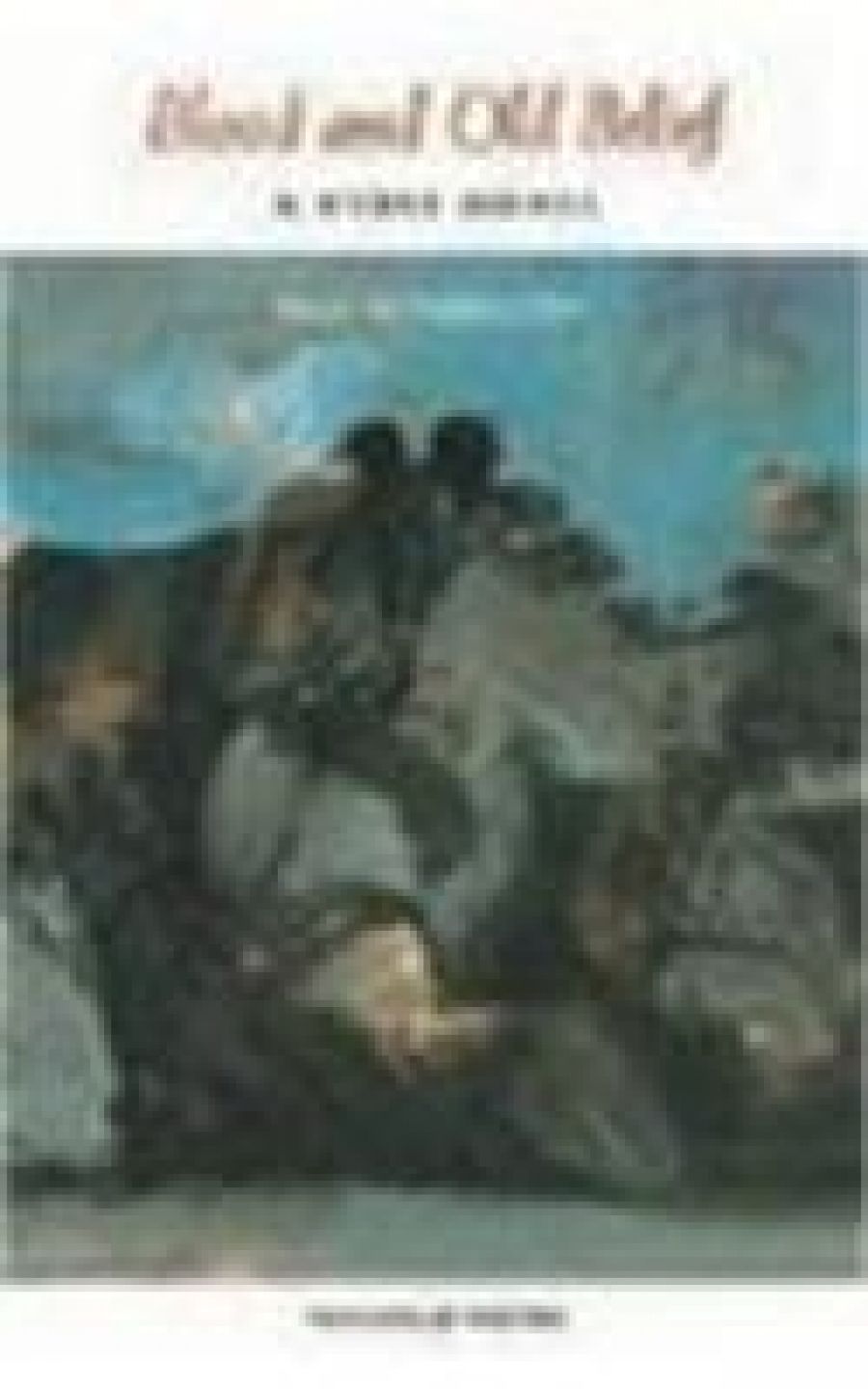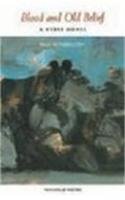
- Free Article: No
- Contents Category: Verse Novel
- Review Article: Yes
- Article Title: Striated Tears
- Online Only: No
- Custom Highlight Text:
The scene of Paul Hetherington’s ‘verse novel’, Blood and Old Belief, is established in the opening stanza: ‘ironbarks that wander / on ancient hillsides /stringybarks and cypresses / blackening horizons / in the western country.’ The stanza unrolls in a leisurely twelve-line sentence, but working in opposition, in tension, are the terse trimeters of each line. The effect is to simulate an eye’s isolation of individual elements of this rural landscape. From the start, we are in the hands of a skilled verse practitioner for whom ‘conservative’ metrical forms are both the bedrock and the supple medium of the story that he tells.
- Book 1 Title: Blood and Old Belief
- Book 1 Biblio: Pandanus, $19.80 pb, 84 pp
- Book 1 Cover Small (400 x 600):

- Book 1 Cover (800 x 1200):

Yet it has the feel of a documentary as well: an account of the ruinous effects of a prolonged drought on a farming family. This is an ‘Australian Story’. Jack stoically faces a slow, strangling disaster: ‘They’d dig the land again / but what can planting do / when all activity / is useless.’ For his Italian-born wife, Cecilia, the drought is alien and dismaying: ‘at first she’d thought this simply history’. Now, instead, is confirmed her ‘distrust of soil / that’s unlike rich Italian loam’. The essential, stark drama of the novel is whether the marriage of Jack and Cecilia, or the drought, will break first.
Hetherington has previously published five volumes of verse and Stepping Away: Selected Poems. With Blood and Old Belief, he has ventured into territory popularised by several of his contemporaries. Les Murray’s second verse novel, Fredy Neptune, is a conspectus of the horrors of the twentieth century and a virtuoso feat of poetic technique. Those following him recently are fit, though few. Dorothy Porter’s Wild Surmise (also her second essay in this form) was short-listed for this year’s Miles Franklin Award. Geoff Page’s Drumming on Water is a mystery (murder, perhaps) involving an all-girl band in Sydney in the late 1930s and early 1940s.
These were all, in their vibrant and different ways, historical novels. Hetherington’s is both contemporary (published as one of the worst droughts in a century ends) and of seasonal, rather than historical, reckoning of time (not ‘simply history’, as Cecilia had hoped). In time of drought, hope narrows. The future, which might offer deliverance, cannot readily be imagined. The consolations of history (the drought will break) seem empty. It is an emotional business with a long tradition in Australian literary history, inflected comically in poetry in John O’Brien’s ‘Hanrahan’ (‘we’ll all be rooned ... before the year is out’) or tragically, in prose, in Katharine Susannah Prichard’s Coonardoo.
Being a saga, Prichard’s novel was formally, necessarily, the narrative of generations. Despite the ruin of Hugh’s attempt to outlast the drought, we are enticed to believe that his daughter, Phyllis, and the stockman Billy Gale, can regenerate the family station. In Hetherington’s verse novel, that possibility is attenuated. There is no suggestion that Katherine, the bookish, beautiful, sixteen-year-old daughter of Jack and Cecilia, will want to carry on the precarious cause of the farm. She may thrive elsewhere, but the book ends desolately, with Jack on his own, listening to the breeze, watching the storm that has come too late.
The acuity of Hetherington’s imagery informs every section of Blood and Old Belief (there are fifty-one of them, most dedicated to the point-of-view of one of the three main characters). This is a territory ‘crossed by hazy, high-tossed air’. Here ‘the night is swiftness of owls, flurry /of insects caught in light, wing-beat, shrub-scrurry / a distant laughter of others’. Hetherington’s observation of landscape is imbued with a quiet authority: ‘Drought stands on the land / and its staring dry / unmakes the settled world.’ Here the bark of gum trees falls ‘in strips and long, striated tears’. The writing is spare, undemonstrative, faithful to the setting of this poetry.
For Cecilia, the failures of language to comfort increase her despair. She has lost much that was native to her (‘words that were like mint leaves on her tongue’), while finding of her new country that ‘its ancient words refuse my life’. Her consolation is wordless, in the rituals of Catholic communion, where at least she can ‘drink the wine that’s blood and old belief’. That articulation could not be her husband’s. His belief is in salvation through endurance, rather than by intercession. Of how this pair came to be together, Hetherington invites our inference rather than filling in the background that a more conventional writer would relish.
It is their separation that Hetherington focuses on: for Cecilia ‘All that was sure has shifted’ – ‘what I loved in him is nearly gone’. Tersely, almost in despair, Jack confides that ‘On each new-made morning / I hope that things will turn / to what they were, they don’t’. His has been a marriage that ‘dared cross boundaries / to meet in difference’, but things don’t turn, or not in time. Blood and Old Belief is a sombre, disquieting work. Its poetic craft is of a high order. Without enough notice being taken, we may have moved into a vintage period of Australian verse, where the generation after Murray and Page – loosely that of Porter, Hetherington, Anthony Lawrence, Sarah Day – renews faith in what can be done here, in and by poetry.


Comments powered by CComment